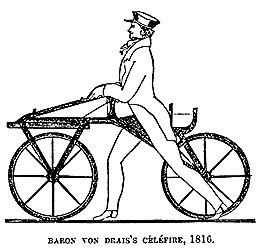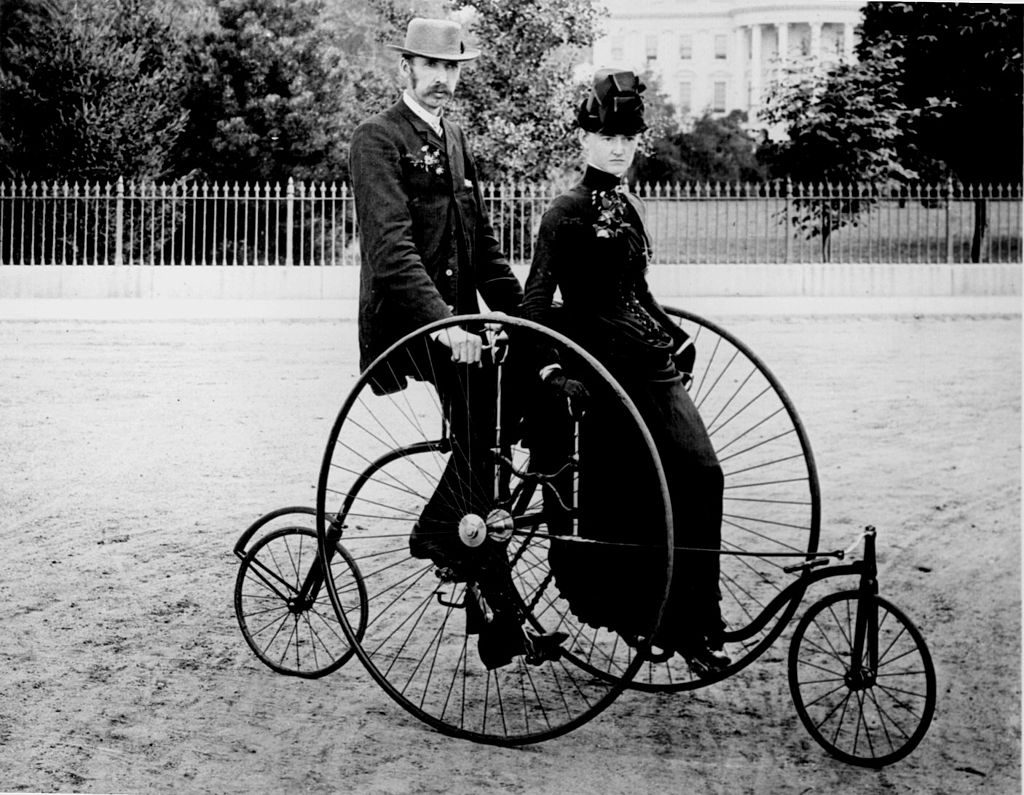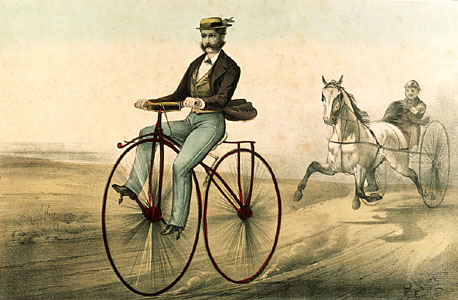The first ever bicycle like device dates back to the 1490s. Leonardo da Vinci sketched one similar to what is now known as the bicycle. However, he never built it and his sketches were not found until the 1960s. The Celerifere was invented by a Frenchman in the late 1700s. It was similar to the bicycle as well. However, we are going to be focusing on the eighteenth century bicycle that set the path for the modern day bicycle so widely used.
The Draisine
The Draisine was first invented in 1816. It was named for its inventor, a German man named Karl Drais. He created it in hopes that it would be an easier transportation device than horses. Drais did not realize that it was easy to fall and shoes wore out quickly when riding. Instead, it was used mainly amongst the aristocracy for fun. Many even called it the “hobby horse”. To use it, you had to push off from the ground and steer using the front wheel.
Human Powered Cycles
Human powered cycles were used mainly between the 1820s-50s. These cycles had either three, tricycles, or four wheels, quadracycles. In the 1850s they were exported worldwide by Willard Sawyer. This specific style of cycle was built mainly so you would not have to balance, unlike the two-wheel bicycle.
The Velocipede “Boneshaker”
The Velocipede, often known as the “boneshaker”, was the first bike with pedals. These were invented and manufactured in France beginning in the 1867 by the Michaux company. Manufacturing ended in 1869 when the “high-wheel” bicycle was introduced. It was called the “boneshaker” because of its stiff iron frame. This made to a rough and bumpy ride. Around this time was when bicycles really became popular. Indoor riding areas were built in many large cities. These were similar to a modern day roller rink.
The Penny-farthing, or High-Wheel
The Penny-farthing bicycle, known best as the “high-wheel”, is considered to be the first real bicycle by many. They were very popular in the 1870s-80s. Eugène Meyer, a man from Paris, is known as the father of this style of bicycle. These bicycles were the first to be entirely made of metal. On these bicycles were large front wheels and much smaller back wheels. The larger the front wheel, that faster it could go. Vulnerable to road hazards because of the seat height, these bicycles were not the safest. It was easy to crash. Just by hitting a small rut or rock could send the rider flying and result in serious injuries. High-wheel bicycles were still quite popular, especially amongst men.
The Safety Bicycle
The safety bicycle is most similar to modern day bicycles of all the models used in the nineteenth century. In fact, they are still used today though a bit different than the originals. The term “safety bicycle” is also not used to describe modern day bikes. These were most popular starting in the late 1880s and beyond. In 1876, Harry John Lawson, an engineer from Britain, designed the first safety bicycle. One of the main selling points for these back in the nineteenth century was the fact that the pedals were much lower and it was much easier to stop. Safety bicycles, hence the name, were much safer than the dangerous penny-farthings. Bicycles only grew more and more popular with the invention of the safety bicycle.






